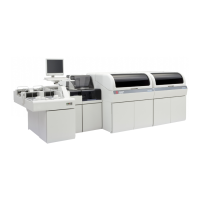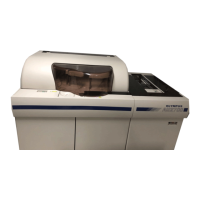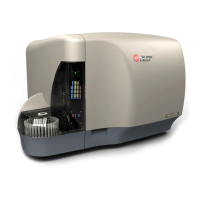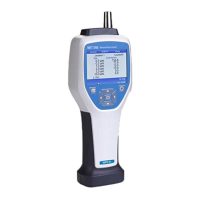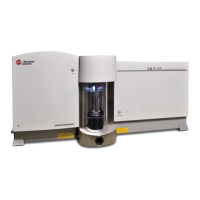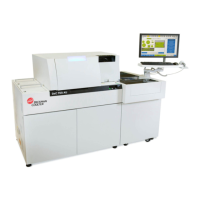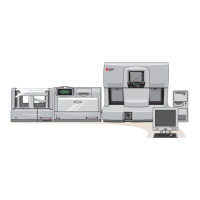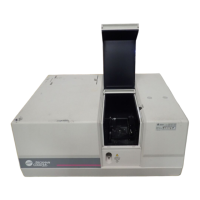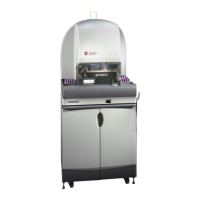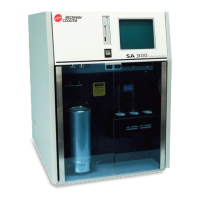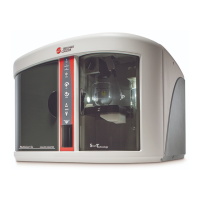
Do you have a question about the Beckman Coulter Multisizer 4 and is the answer not in the manual?
| Measurement Principle | Electrical Sensing Zone (Coulter Principle) |
|---|---|
| Aperture Size Range | 20 μm to 2000 μm |
| Software | Multisizer 4 software |
| Power Supply | 100-240 VAC, 50/60 Hz |
| Operating Temperature | 15°C to 35°C |
| Counting Speed | Up to 10, 000 events/second |
| Analysis Time | Typically 20-60 seconds |
| Data Output | Size distribution, concentration, and statistical data |
| Connectivity | USB, Ethernet |
Alerts the user to potentially hazardous situations that could result in death or serious injury.
Highlights hazards related to high voltages present inside the instrument and grounding requirements.
Warns about incompatible electrolyte solutions, toxicity, and safe handling procedures for reagents.
Advises against interfering with interlocks, using force on glass items, or improper aperture tube handling.
Warns about flammable electrolyte solutions and precautions for handling solvents and electrolyte solutions.
Alerts the user to potentially hazardous situations that could result in minor or moderate injury.
Notes the importance of interference-free power and compliance with electrical interference standards.
Provides guidance on draining and flushing procedures when using specific electrolyte solutions.
Details the procedure for cleaning system components and accessories.
Describes the thorough cleaning procedure for the system, alternating between water and alcohol.
Provides a step-by-step guide to powering on and starting the Analyzer.
Outlines the necessary steps to prepare the analyzer for calibration, control, or sample analysis runs.
Instructions on how to launch the Multisizer 4 software application.
Details on connecting the Multisizer 4 software to the Analyzer, both on startup and via the main menu.
Describes the Main Menu bar and its drop-down menus, noting changes based on security settings.
Explains the Main Toolbar buttons as shortcuts for Main Menu functions and their organization.
Details the Instrument Toolbar buttons which duplicate functions from the Run drop-down menu.
Guides the user on selecting an aperture tube size based on particle size for accurate measurements.
Describes how to correctly place an aperture tube in the Analyzer and subsequent calibration needs.
Details special handling, cleaning, and operating procedures for sensitive small aperture tubes.
Recommends current and gain settings for 20 µm and 30 µm aperture tubes to prevent damage.
Guides the user through the process of calibrating the aperture using calibrator beads.
Outlines the steps required to prepare the Analyzer for the aperture calibration procedure.
Details the procedure for running the aperture calibration, including preview and concentration verification.
Guides the user through completing the calibration run and accepting the calculated calibration constant (Kd).
Explains how to verify aperture calibration to ensure accurate measurement of calibrator bead size.
Offers step-by-step guidance for installing a new aperture tube and verifying calibration.
Explains how to set electrical pulse size (current) and amplification (gain) for particle analysis.
Guides the user through measuring the noise level after setting current and gain.
Details how to automatically verify the calibration of the installed aperture tube.
Explains how to analyze a concentration control sample to verify count accuracy.
Explains how to use SOM to specify analysis settings like control mode, file name, and pulse settings.
Details how to use the Create SOM Wizard for setting up analysis parameters.
Sets parameters to determine when an analysis run will end, such as elapsed time or total count.
Specifies pre-run prompts, number of runs, and post-run settings like file save and print.
Details how to enter stirrer settings, including beaker size and stirrer position.
Sets the lower limit of size distribution, electrical pulse size (current), and amplification (gain).
Enters bin spacing and other details to determine analysis result range and resolution.
Allows entry of sample volume, density, and dilution information for concentration analyses.
Configures settings to detect aperture blockage and trigger actions like unblocking or stopping the run.
Explains how to edit existing SOM settings using the Edit the SOM window.
Guides on creating a Standard Operating Procedure by combining SOM and Preferences files.
Explains how to set viewing, exporting, and printing preferences using the wizard or edit window.
Selects analysis data, graphs, or listings that appear on-screen and in printed reports.
Selects statistics to export to other file types, such as Microsoft Excel spreadsheets.
Selects formatting options and page elements for printed reports.
Sets display, style, and color options for printed graphs.
Allows changing fonts, text color, and background color for reports and on-screen displays.
Selects default graph or listing types and other analysis viewing preferences.
Provides a checklist to follow before each sample run for proper Analyzer preparation.
Explains how to select analysis and viewing settings using SOM Wizard and Create Preferences Wizard.
Describes how to enter sample information before a run for data organization and file naming.
Explains how to enter sample specifications to verify particle size and distribution against parameters.
Provides a comprehensive guide to preparing the Analyzer and running an analysis.
Explains the importance of blank runs for accurate results, especially with low concentration samples.
Provides steps for running a blank analysis and saving the data.
Covers setting viewing, printing, and statistical analysis defaults using wizards or edit windows.
Details how to convert pulses to size by changing bin number and particle size range.
Explains how to save analysis data automatically or manually.
Details how to set up Run Settings for automatic saving of analysis data.
Measures filtration efficiency by comparing particle number and/or sizes before and after filtering.
Explains how security modes affect availability of configuration options and user privileges.
Allows users to hide menu items in various drop-down menus on the Main Menu bar.
Explains how to hide items in the RunFile, Edit, View, and Calculate drop-down menus.
Provides options to remove toolbars, customize button images, add/remove buttons, and change order.
Allows customization of colors, warning levels, click sounds, and Status Panel location.
Explains running with no security or password-protected security levels.
Provides instructions on how to log in to the software when security settings require it.
